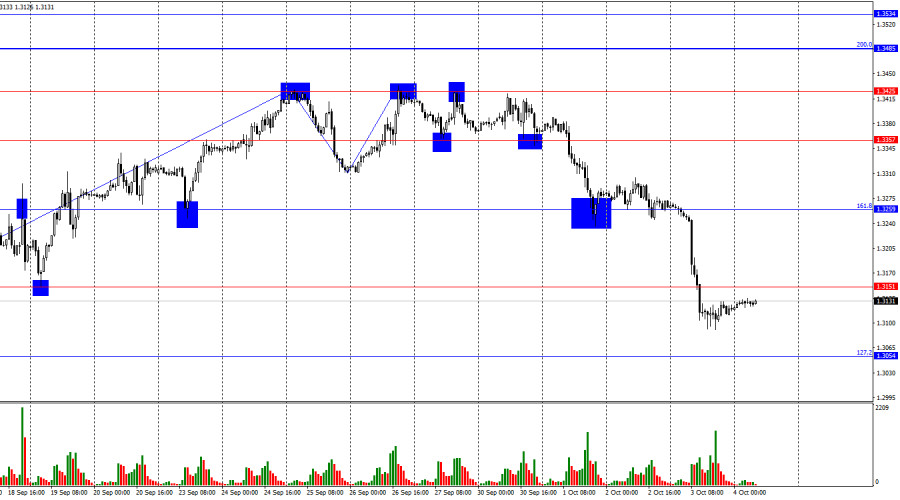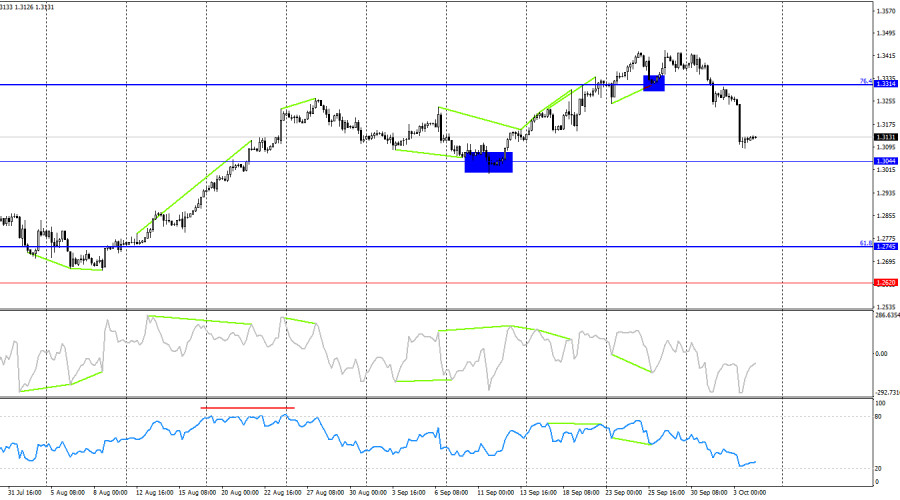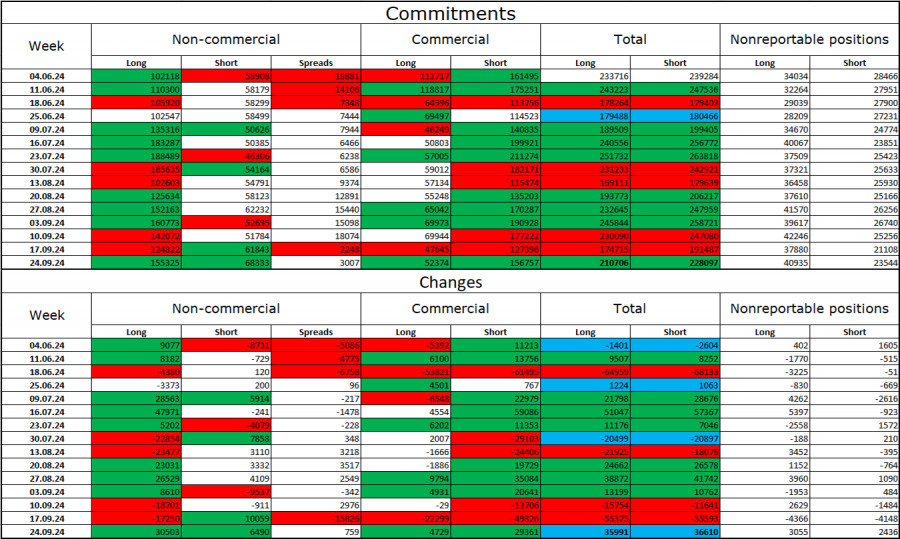
On Thursday, the GBP/USD pair consolidated below the 161.8% corrective level at 1.3259 and then below 1.3151. Therefore, the downward movement may continue today toward the next Fibonacci level of 127.2% at 1.3054. Consolidation above the 1.3151 level would allow for a potential rebound, aiming for the 1.3259 level.

The wave structure is clear. The last completed upward wave (on September 26) did not break the peak of the previous wave, while the downward wave currently forming easily broke the low of the previous wave at 1.3311. Thus, the "bullish" trend is considered over, and a "bearish" trend is now forming.
On Wednesday, the bearish traders took a break, but on Thursday, they resumed their efforts with renewed strength. The bears had been passive for too long, waiting for the right moment and found it this week. First, Jerome Powell stated on Monday that the likelihood of a 0.50% rate cut in November is low unless the labor market situation deteriorates significantly. Then, yesterday, Andrew Bailey hinted that the Bank of England might accelerate rate cuts if inflation in the UK continues to decrease. Of course, Powell's and Bailey's comments can be interpreted in different ways, but in my view, Powell's tone was "hawkish," while Bailey's was "dovish." It seems the market agreed with this interpretation. Powell and Bailey's speeches were not the only events this week that supported the U.S. dollar. A series of labor market and ISM business activity reports also boosted the bears. Today, the market will closely watch the US labor and unemployment data, which could lead to another bearish attack if the figures are strong.

On the 4-hour chart, the pair reversed in favor of the U.S. dollar and consolidated below the 76.4% corrective level at 1.3314. Therefore, the downward movement could continue toward the next level at 1.3044. There are no new divergences today, but several "bearish" signals have appeared in recent weeks. A rebound from the 1.3044 level could lead to a slight recovery, but it's crucial for the bears to close below this level.
Commitments of Traders (COT) Report:

The sentiment of the "Non-commercial" category of traders became much more "bullish" in the last reporting week. The number of long positions held by speculators increased by 30,503, while the number of short positions grew by 6,490. Thus, professional players had been reducing long positions and increasing short positions for two weeks, but now they have returned to their previous behavior. Bulls still hold a solid advantage. The gap between the number of long and short positions is 87,000: 155,000 versus 68,000.
In my opinion, the British pound still faces the prospect of further decline, but the COT reports currently suggest otherwise. Over the past three months, the number of long positions has risen from 102,000 to 155,000, while the number of short positions has grown from 58,000 to 68,000. I believe that over time, professional players will start reducing long positions or increasing short positions, as all potential factors for buying the British pound have already been priced in. However, technical analysis still shows a "bullish" trend.
News Calendar for the US and the UK:
US – Nonfarm Payrolls (12:30 UTC)US – Unemployment Rate (12:30 UTC)US – Average Hourly Earnings (12:30 UTC)Friday's economic calendar contains key data from the U.S. The impact of these reports on market sentiment will be significant in the second half of the day.
Forecast for GBP/USD and Trading Advice:
Selling the pair was possible after a rebound from the 1.3425 level on the hourly chart, with targets at 1.3357 and 1.3259. Both targets have been reached. Closing below 1.3259 opened the door for further sales with a target of 1.3151. A close below 1.3151 targets 1.3054. Today, a rebound from 1.3151 from below would allow for another round of selling. Buying opportunities will arise if the pair closes above 1.3151 or after a rebound from the 1.3044 level.
Fibonacci grids are drawn from 1.2892 to 1.2298 on the hourly chart and from 1.4248 to 1.0404 on the 4-hour chart.